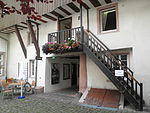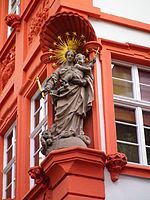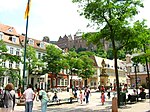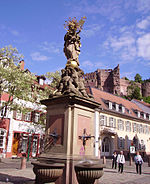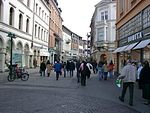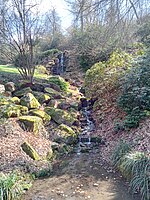Old Bridge (Heidelberg)
1788 in the Holy Roman EmpireBridges in Baden-WürttembergBuildings and structures in HeidelbergTourist attractions in Heidelberg
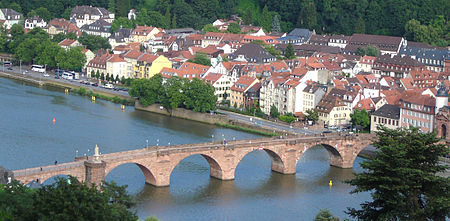
The Karl Theodor Bridge (German: Karl-Theodor-Brücke), commonly known as the Old Bridge (Alte Brücke), is an arch bridge in Heidelberg that crosses the Neckar river. It connects the Old City with the eastern part of the Neuenheim district of the city on the opposite bank. The current bridge, made of Neckar sandstone and the ninth built on the site, was constructed in 1788 by Elector Charles Theodore, and is one of the best-known landmarks and tourist destinations in Heidelberg.
Excerpt from the Wikipedia article Old Bridge (Heidelberg) (License: CC BY-SA 3.0, Authors, Images).Old Bridge (Heidelberg)
Alte Brücke, Heidelberg
Geographical coordinates (GPS) Address External links Nearby Places Show on map
Geographical coordinates (GPS)
| Latitude | Longitude |
|---|---|
| N 49.414338 ° | E 8.70954 ° |
Address
Alte Brücke (Karl-Theodor-Brücke)
Alte Brücke
69120 Heidelberg (Neuenheim)
Baden-Württemberg, Germany
Open on Google Maps
